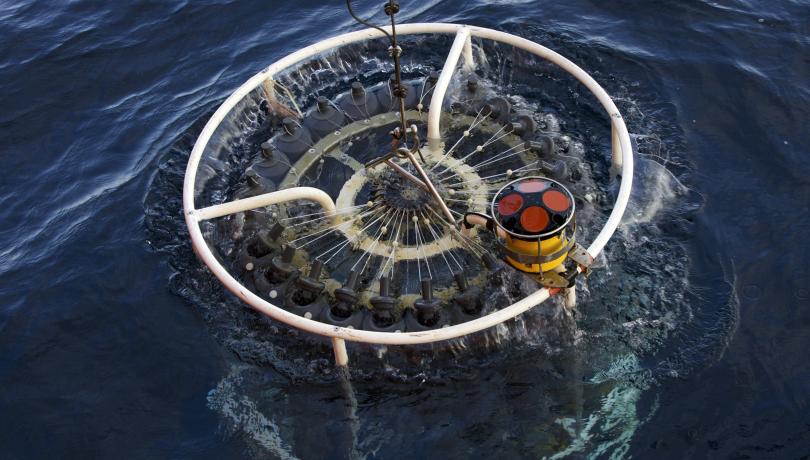The role of viruses on marine microbial communities has been widely studied in the coastal or surface zones of the oceans but the evaluation of viruses in the deep ocean is scarce. One of the main objectives of the Malaspina 2010 Circumnavigation Expedition, led by the Spanish National Research Council (CSIC), was to sample the deep ocean and to study the life strategies of the viruses that live there.

The role of viruses on marine microbial communities has been widely studied in the coastal or surface zones of the oceans but the evaluation of viruses in the deep ocean is scarce. One of the main objectives of the Malaspina 2010 Circumnavigation Expedition, led by the Spanish National Research Council (CSIC), was to sample the deep ocean and to study the life strategies of the viruses that live there. The results of the study, published in the journal Science Advances, show that viral lysis, or a process that breaks down cells and produces the release of intracellular material, is an important phenomenon in the dark ocean and it is also a significant agent of mortality of the prokaryotic communities (bacteria). Therefore, this viral activity play a key role in the in the production of dissolved organic carbon and nutrients in the deep ocean.
Until recently, it was believed that the life strategy of the viruses in the deep ocean was a state of dormancy called “lysogeny”. Our work, however, demonstrates the opposite; viruses are active members in the deep layers of the oceans. We have shown that they play a key role in the microbial food web in the tropical and subtropical ocean, "says ISMAR-CNR the researcher Elena Lara, who is currently a postdoctoral researcher at the Institute of Marine Sciences of Venice, Italy (ISMAR-CNR) and collaborates with the Institute of Marine Science in Barcelona, Spain (ICM-CSIC) where she carried out this work.
The study provides a comprehensive view of the ecological role of marine viruses in the global ocean since more than 1,000 samples were taken from surface layers to 4,000 m deep in the Atlantic, Pacific and Indian oceans. The results, obtained using flow cytometry, show that viruses are more abundant in the surface than in deeper layers. However, the deep ocean represents approximately 70% of the total volume of the oceans, thus 94,7 % of the viruses are below 200 m deep.
"Although the abundance of virus decreases with depth, they are fundamental members in the microbial food wed in the deep ocean. Its activity is fundamental at a global level for the regeneration of organic carbon and nutrients, "adds Dolors Vaqué, also a researcher at the Institute of Marine Sciences in Barcelona (ICM-CSIC)”.
The Malaspina 2010 Circumnavigation Expedition
The Malaspina 2010 Circumnavigation Expedition, a project led by the Spanish National Research Council (CSIC) integrates more than 400 scientists from a round the world. The Malaspina Expedition sailed the ocean from 13 December 2010 to 14 July 2011, sampling the tropical and subtropical Atlantic, Indian and Pacific Oceans. The goals of the Expedition were to provide an assessment of the state of the oceans in 2011 and the impact of global change on the ocean ecosystem and explored their biodiversity.
Scientists took about 200,000 samples of water, plankton, atmosphere particles and gases at 313 points in the Indian, Pacific and Atlantic oceans with depths of up to 6,000 meters. On board they measured temperature and salinity, surface properties, acoustics of marine currents, concentration of oxygen and carbon dioxide in the sea and in the atmosphere and the reach of sunlight, among other parameters.
Press release: CSIC Comunicació